Andrew J Lepage
age ~63
from Ipswich, MA
- Also known as:
-
- Andy Lepage
- Andrew Le
- Andrew Le Page
- Phone and address:
-
1 Rosewood Dr, Ipswich, MA 01938
9783562670
Andrew Lepage Phones & Addresses
- 1 Rosewood Dr, Ipswich, MA 01938 • 9783562670
- Newburyport, MA
- Lowell, MA
- Hampstead, NH
Resumes

Chief Scientist
view sourceLocation:
Ipswich, MA
Industry:
Research
Work:
Visidyne Jul 1992 - Jul 2017
Senior Project Scientist
Concord-Carlisle Adult & Community Education Program Sep 1996 - Dec 2001
Teacher
Helmers Publishing Jun 1995 - Sep 1998
Editorial Staff
Digital Equipment Corp Jul 1987 - Jul 1992
Senior Hardware Engineer
Drew Ex Machina Jul 1987 - Jul 1992
Freelance Writer
Senior Project Scientist
Concord-Carlisle Adult & Community Education Program Sep 1996 - Dec 2001
Teacher
Helmers Publishing Jun 1995 - Sep 1998
Editorial Staff
Digital Equipment Corp Jul 1987 - Jul 1992
Senior Hardware Engineer
Drew Ex Machina Jul 1987 - Jul 1992
Freelance Writer
Education:
University of Massachusetts Lowell 1980 - 1984
Bachelors, Bachelor of Science, Physics
Bachelors, Bachelor of Science, Physics
Skills:
Physics
Writing
Idl Programming
Digital Image Processing
Data Analysis
Remote Sensing
Optics
Spacecraft
Astronomy
Astrobiology
Historical Research
Photography
Web Content
Technical Writing
Research
Program Management
Simulations
Project Management
Writing
Idl Programming
Digital Image Processing
Data Analysis
Remote Sensing
Optics
Spacecraft
Astronomy
Astrobiology
Historical Research
Photography
Web Content
Technical Writing
Research
Program Management
Simulations
Project Management
Languages:
English

Andrew Lepage
view sourceUs Patents
-
Method And Apparatus For Non-Contact Opens/Shorts Testing Of Electrical Circuits
view source -
US Patent:49704613, Nov 13, 1990
-
Filed:Jun 26, 1989
-
Appl. No.:7/371589
-
Inventors:Andrew J. LePage - Lowell MA
-
International Classification:G01R 3100
G01R 3102 -
US Classification:324158F
-
Abstract:A circuit is tested for unwanted shorts and opens by positioning the circuit between a pair of electrodes in a chamber filled with an inert gas with the circuit conductors facing one of the electrodes. The circuit is charged by applying a selected voltage to the electrodes to produce an electric field extending generally perpendicular to the circuit, the voltage polarity being such that the one electrode carries the negative electrical charge. The circuit is then subjected to a pulsed laser beam brought to a focus between the one electrode and a selected spot on a conductor of the circuit so as to ionize the chamber gas at the beam focus to form a plasma so that an electric charge is imparted to that spot and to other circuit conductor portions having electrical continuity with that spot. The circuit is then discharged by reversing the polarity of the applied voltage and increasing the voltage magnitude substantially to the breakdown voltage of the chamber gas so as to form a glowing discharge plasma in the chamber gas opposite the charged portions of the circuit conductors. The circuit is observed to determine which portions of its conductors are glowing and therefore have electrical continuity with the selected conductor spot and which portions are not.
-
Test Cell For Non-Contact Opens/Shorts Testing Of Electrical Circuits
view source -
US Patent:50327887, Jul 16, 1991
-
Filed:Jun 26, 1989
-
Appl. No.:7/371704
-
Inventors:Diethelm G. Ringleb - Andover MA
Andrew J. LePage - Lowell MA -
Assignee:Digital Equipment Corp. - Maynard MA
-
International Classification:G01R 3102
-
US Classification:324158F
-
Abstract:A test cell for non-contact testing a circuit board for shorts and opens includes a hermetically sealable container for that circuit board, at least one wall of the container providing access to permit a circuit board to be positioned at an imaging plane inside the container. A pair of planar electrodes positioned inside the container are spaced on opposite sides of and parallel to the imaging plane and these electrodes are connected to contacts on the exterior of the container so that the electrodes can be releasably connected to an external voltage source to provide an electric field inside the container which extends perpendicular to the imaging plane. One of these electrodes and the container wall adjacent thereto are transparent to light from a pulsed laser positioned outside the container which is arranged to image a selected spot on a conductor of a circuit positioned at the imaging plane. One or more valved gas fittings are mounted to the outside of the container so that the container can be releasably connected to external gas conduits to fill the container with an inert gas. Also a sensor may be provided inside the container to sense the gas pressure in the container.
-
Laser-Activated Plasma Chamber For Non-Contact Testing
view source -
US Patent:52026230, Apr 13, 1993
-
Filed:Feb 26, 1992
-
Appl. No.:7/842043
-
Inventors:Andrew J. LePage - Hampstead NH
-
Assignee:Digital Equipment Corporation - Maynard MA
-
International Classification:G01R 3102
-
US Classification:324158F
-
Abstract:A non-contact testing device for detecting continuity or shorts in conductors of a printed circuit board or integrated circuit employs a laser-activated plasma to make electrical connection between a test probe and a node under test. The plasma is generated in air in a small chamber which is subjected to a concentrated laser pulse, and the plasma exits the chamber due to its self-generated pressure. An electrically-conductive plume of ionized gas (i. e. , plasma) is thus used to probe a circuit without making physical contact by a probe. Preferably, the chamber is a conical shape with metallic walls, and the laser pulse is directed into the chamber by a fiber optic cable ending at the large end of the chamber. The plasma exits an orifice at the small end of the conical chamber. The device may be moved about by an X-Y positioning mechanism to probe the circuit under test.
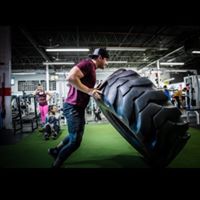
Andrew Lepage
view sourceAndrew Lepage
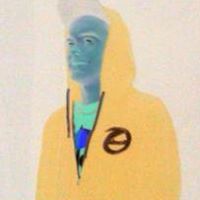
Andrew Lepage
view source
Andrew Lepage
view source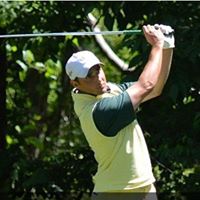
Andrew Lepage
view source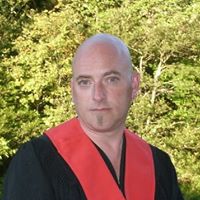
Andrew Lepage
view source
Andrew LePage
view source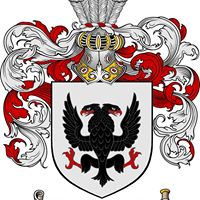
Andy Lepage
view source
Andrew LePage
view sourceYoutube
Myspace
Flickr
Get Report for Andrew J Lepage from Ipswich, MA, age ~63
















